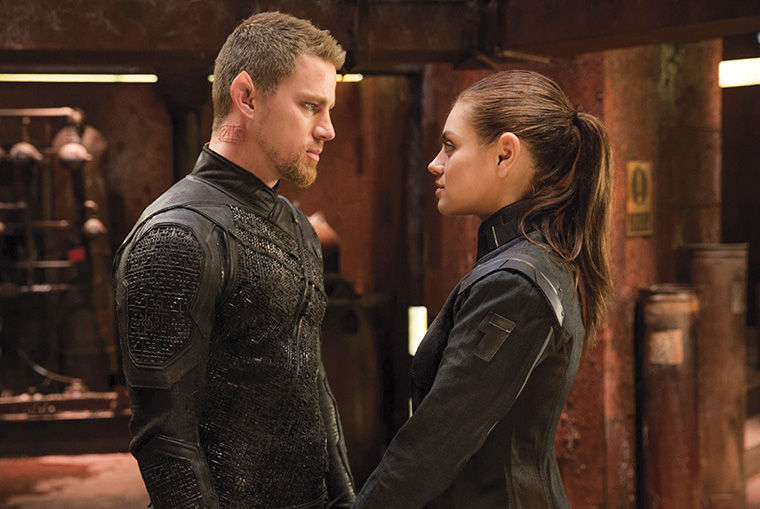‘Jupiter Ascending’ stuns visually, story stagnates
‘Jupiter Ascending’ stuns visually, story stagnates
February 9, 2015
In the recent sci-fi film “Jupiter Ascending,” Jupiter Jones (Mila Kunis) is a humble housecleaner who turns into space royalty in a “Star Wars”-meets-“Cinderella” story, in which she saves the galaxy.
Written and directed by Lana and Andy Wachowski—the duo known for “The Matrix” trilogy and “Cloud Atlas”-—their latest venture into sci-fi fantasy was filmed in Chicago.
Throughout the film, Jones lands on the hit list of the solar system’s evil alien emperor Balem Abrasax (Eddie Redmayne). However, Caine Wise (Channing Tatum), a wolf-man alien hybrid, is tasked with guiding Jones through the many perils of the universe that she always longed to explore.
The film uses innovative stunt techniques rather than computer-generated imagery, and it is better for it. The impressive visuals seem more authentic and convincing because the Wachowskis and cinematographer John Toll managed to avoid the pitfalls of relying too heavily on CGI effects, that call attention to themselves. The filmmakers take advantage of Panocams, a new cinematic camera device, which was mounted on a helicopter to effectively capture a stuntman and 180 degrees of the Chicago skyline during sunrise for the most thrilling scene of the entire movie. The Chicago-native directors are not afraid to make a spectacle of their beloved city, especially during a devastating intergalactic space battle.
The film is pleasing to the eye from start to finish, with beautiful scenes of space, planets and ships. The design of the foreign worlds and their architecture are convincing and creative. One space ship has a Renaissance cathedral-like design, and the alien metropolises have exceptional steampunk-style architecture. Most importantly, these extraterrestrial worlds are convincing and fascinating. The Wachowskis are never vague about the sources of their inspiration, and the blend of visual inventiveness they bring included in the film raises standards for films to come.
However, the visual effects write a check that the story and characters cannot cash. As fresh as the scenery may be, the plot is stale. More than one reference to Terry Gilliam’s “Brazil,” oddly enough, does not bail it out, even while featuring a brief yet satisfying cameo with the Monty Python alumnus.
Much of the film carries a gravely serious tone. Because Tatum and Bean are cast as stone-cold military characters, the burden of comic relief falls at the feet of the protagonist Jones, and Kunis’ attempts to crack wise fall flat. The movie is not without its chuckles, though, as Eddie Redmayne’s explosive performance received more laughter than was intended. Tatum may have played a more interesting character in this movie, but by no means is he Han Solo—neither is Bean’s character for that matter.
“Jupiter Ascending” borrows from sci-fi classics like “Star Wars” and “Terminator” but does not succeed in emulating any of their successes, nor that of recent space-adventure smashes “Guardians of the Galaxy” or “Interstellar.” “Jupiter Ascending” is neither simple and accessible to viewers nor unnecessarily complicated and confusing. Though the movie’s overall plot line is unlikely to turn many heads, the film’s graphics will, and audiences are more likely to see future projects utilizing similar technology for visual delight.








